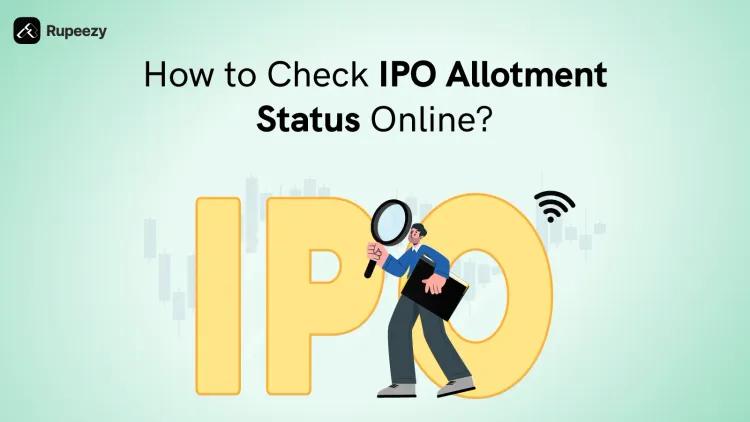Red Herring Prospectus (RHP): Meaning, Purpose, Importance


00:00 / 00:00
When a company plans to go public, there are certain things that it needs to declare. Starting from nature to the details of management, everything needs to be disclosed. It is not just about deciding the amount to raise and the share price. But there is more to it.
This is where the Red Herring Prospectus is created. This is a document that you need to create before a stock market listing. While it doesn’t include the final offer price, it plays a key role in helping investors make informed decisions.
In this blog, we will discover the details of what a red herring prospectus (RHP) is. Also, it will discuss the need and purpose of it as well.
What is Red Herring Prospectus (RHP)?
RHP stands for red herring prospectus, which is a key document for companies planning to go public. It is a preliminary document filed by a company. This is filed with the market regulator, such as the SEBI.
This is done before launching an Initial Public Offering (IPO).
It provides essential information about the company and the upcoming public offering. But it does not include the details linked to the number of shares offered to the public and their final price.
The key features of RHP include:
Offers firsthand information about the company and its nature.
Defines the financials and projections as well.
Outlines potential risks and uncertainties linked to investing in the company.
Excludes the final offer price and the exact number of shares being offered.
Shares a disclaimer that the information shared is incomplete and might change.
Serves as an invitation for potential investors to express interest, but cannot do bidding.
A proper review by the regulators is mandatory.
Ensures complete due diligence before investing starts.
Purpose of a Red Herring Prospectus (RHP)
Here are the main purposes of an RHP that you must know:
1. Informing Investors
The RHP provides detailed insights into the company’s business model, financial status, management team, and growth plans. This helps investors evaluate the company before deciding to invest.
2. Disclosing Risks
It outlines all potential risks and uncertainties related to the company’s operations, industry, or financials. This gives investors a clear picture of the challenges they may face.
3. Explaining Use of Funds
The document explains how the IPO proceeds will be used. It defined whether IPO is for expansion, debt repayment, product development, or other business goals.
4. Ensuring Regulatory Compliance
By filing the RHP, the company complies with legal requirements and disclosure norms. This builds trust with investors and shows that the company is following proper procedures.
Why is the RHP Important for Investors?
Every investor wishes to invest in a company that can help in growth. Also, if the investor is aware of the future plans of the company, like where the funds will be used, they feel more secure while investing.
So, the RHP's meaning is shared and defined as the primary reason why investors use RHP. But there are other important reasons as well. These include:
1. Comprehensive Information
The RHP offers detailed insights into the company’s operations, financials, management team, and future strategy. This helps investors understand the overall health and direction of the business before investing.
2. Risk Assessment
It contains a dedicated section outlining potential risks related to the company’s business, market conditions, or legal issues. This allows investors to evaluate uncertainties and make risk-aware decisions.
3. Transparency and Trust
By openly sharing critical business and financial data, the RHP promotes transparency. This builds trust among investors and reinforces confidence in the IPO process.
4. Purpose of Fundraising
The document clearly states how the funds raised will be used, such as for expansion, debt repayment, or operational needs. Investors can then assess whether the intended use supports long-term growth.
5. Industry and Market Context
The RHP includes insights into the company’s industry, market position, and competition. This context helps investors understand external factors that may impact business performance.
6. Regulatory Assurance
As the RHP is reviewed and cleared by regulatory authorities, it ensures that all required disclosures are in place. This reduces the chance of misleading or incomplete information.
7. Informed Decision-Making
With access to financials, leadership details, and business strategy, investors can make better investment decisions. The RHP equips them with facts, not speculation, to evaluate the IPO more confidently.
Key Sections Inside an RHP
While drafting a red herring prospectus, there are certain sections that must be included. These are common and ensure that all the required information reaches the financial regulatory authorities as well as the investors. These include:
1. Company Overview
This section introduces the company, covering its history, core business model, mission, and vision. It also highlights the key members of the management team and promoters, helping investors understand who runs the business and what it stands for.
2. Industry and Market Overview
It outlines the broader industry in which the company operates, along with current market trends, growth drivers, challenges, and competition. This section helps investors assess the company’s market position and long-term prospects within its sector.
3. Objects of the Issue
Here, the company explains how it plans to use the IPO proceeds. Common purposes include business expansion, working capital needs, debt repayment, or acquiring assets. This section allows investors to judge the financial intent behind raising funds.
4. Offer Details
This part provides specifics about the IPO, such as the number of shares offered, price band, face value, lot size, and how the shares will be allocated among different investor categories, like retail, institutional, and non-institutional buyers.
5. Risk Factors
It lists all significant risks related to the business, market, regulatory issues, or internal operations. The aim is to ensure that investors are fully aware of potential challenges that may impact the company’s performance or their investment.
6. Financial Information
This section shares all the audited financial statements, such as the balance sheet, income statement, and cash flow statement. All the key ratios and financial summaries help investors understand the company’s past performance, financial health, and growth trends.
7. Management and Governance
This section provides details about the company’s leadership, including the board of directors, top executives, their experience, compensation, and shareholding. It reflects the strength and credibility of the team managing the business.
8. Business Strategies and Strengths
It outlines the company’s future plans, competitive advantages, and core strengths. It explains how the company intends to grow, address market demands, and sustain its position in the industry over the long term.
9. Dividend Policy
States whether the company has a history of paying dividends and outlines its future approach to profit distribution. This helps investors understand if and how they might receive returns apart from capital appreciation.
10. Legal and Regulatory Disclosures
This discloses any ongoing or past legal proceedings involving the company, promoters, or directors. It also includes compliance records and statutory obligations, offering transparency into the company’s legal standing.
11. Capitalization and Shareholding Pattern
This provides a snapshot of the company’s capital structure, showing equity, reserves, borrowings, and how shareholding will change post-IPO. It also identifies major shareholders and their holdings.
12. Articles of Association and Other Information
It includes important corporate policies, definitions, legal clauses, and details about intermediaries like merchant bankers and registrars. It gives investors a comprehensive view of the rules that govern the company’s operations.
Where Can You Find RHPs?
Before investing in an IPO, reviewing the Red Herring Prospectus is essential. Multiple trusted sources make these documents easily accessible to the public. Here’s where you can find them:
1. SEBI Website
The Securities and Exchange Board of India (SEBI) hosts RHPs in the "Offer Documents" section of its official website. This is one of the most reliable sources for updated and verified documents.
2. Stock Exchange Websites
Leading stock exchanges like the National Stock Exchange (NSE) and Bombay Stock Exchange (BSE) publish RHPs of companies listed or planning to list on their platforms. These documents are available under the IPO or listing sections.
3. Company Websites
Most issuing companies upload their RHPs under the investor relations or IPO section of their official websites after filing with SEBI. This helps ensure transparency with shareholders and potential investors.
4. Merchant Bankers’ Websites
Lead managers or merchant bankers involved in the IPO may also publish the RHPs on their official websites. These are typically available under the "Offer Documents" or "Current Issues" section.
Difference Between DRHP and RHP
Now that you know what is RHP, you must also understand that there is a document called DRHP. Knowing the DHRP vs RHP is really important to ensure that you know which documents empower you with what kind of information.
So, here is a quick difference between DRHP and RHP.
Aspect | Draft Red Herring Prospectus (DRHP) | Red Herring Prospectus (RHP) |
Definition | The initial document is filed with the regulator before an IPO. | The updated version is filed after regulatory feedback and approval. |
Purpose | To present preliminary details and seek observations from the regulator and initial feedback from investors. | To provide complete, updated information for investors before the IPO opens for subscription. |
Content | Covers company background, financials, risks, and objectives, but in a basic and incomplete form. | Contains revised and detailed disclosures, including price band and issue size (not final price). |
Regulatory Status | Submitted to the regulator for review; not meant for public investment decisions yet. | Filed post-approval; serves as a public-facing offer document for investors. |
Offer Details | Price band and number of shares are not disclosed. | Price band and share quantity are disclosed, but not the final price. |
Investor Use | Used for early analysis and regulator feedback; not an official offer to the public. | Enables investors to make informed decisions before subscribing to the IPO. |
Disclosure Level | Preliminary, subject to change based on review outcomes. | Comprehensive and near-final, with minor updates pending final pricing. |
How to Analyze an RHP Like a Financial Analyst
A Red Herring Prospectus holds key details that help investors make sense of a company before it goes public. To analyze it like a financial analyst, one must look beyond surface-level data and evaluate the fundamentals, risks, and future potential in a structured way. Here's how to do it:
1. Understand the Business Model and Strategy
Start by reviewing the company overview and business strategy sections. Understand how the company makes money, what markets it operates in, and how it plans to grow. Look for sustainable revenue models and whether the strategy aligns with current market trends.
2. Industry and Market Position
Study the industry landscape to gauge where the company stands. Check its market share, key competitors, and sector outlook. This helps you understand whether the company operates in a growing market and how well it is positioned against rivals.
3. Examine Financial Statements
Go through the income statement, balance sheet, and cash flow statement. Look for trends in revenue, profit margins, debt, and cash flow. Use key ratios like ROE, ROCE, and debt-to-equity to compare with industry averages and assess financial stability.
4. Assess Risk Factors
Read the risk section thoroughly. Identify business, regulatory, operational, and financial risks that may affect performance. Try to assess how severe and likely each risk is, and whether the company has mitigation plans.
5. Analyze Use of IPO Proceeds
Check where the company plans to use the funds raised—whether for expansion, R&D, acquisitions, or debt repayment. Evaluate if this use supports long-term growth or simply addresses short-term liabilities.
6. Evaluate Management and Governance
Look at the background and experience of the top leadership. A strong, credible management team adds value to the company’s future. Also, be alert to any red flags like legal proceedings involving promoters or directors.
7. Benchmark Against Peers
Compare the company’s revenue growth, profitability, and valuation with other listed players in the same sector. This gives a sense of whether the IPO is fairly priced and how the company stacks up in terms of performance.
8. Check Legal and Regulatory Disclosures
Scan for any pending litigations or regulatory actions. These could impact the company’s reputation or finances in the future. Legal clarity is an important aspect of overall risk evaluation.
9. Dividend Policy and Capital Structure
Look at the company’s approach to dividends—whether it plans to share profits or reinvest. Also check how the capital structure will change post-IPO to understand dilution and long-term financial flexibility.
10. Form an Investment Opinion
After reviewing all sections, bring everything together to form a balanced view. Weigh the strengths and weaknesses, and consider if the company aligns with your risk appetite, return expectations, and investment horizon.
Red Flags to Watch for in an RHP
Before investing in an IPO, it is important to identify any early warning signs in the Red Herring Prospectus. These red flags can help investors avoid companies that may carry higher financial, operational, or governance-related risks.
1. High Levels of Debt
A company with a high debt burden or a rising debt-to-equity ratio may struggle to service its loans. This reduces financial flexibility and increases the risk of default during tough market conditions. Investors should always assess whether the business can comfortably manage its obligations.
2. Declining Revenues or Profitability
If the company shows falling revenue, shrinking profit margins, or negative cash flows over recent years, it may be facing market competition, rising costs, or operational inefficiencies. Such trends raise questions about long-term sustainability and future performance.
3. Limited or Vague Disclosures
When important details like business operations, revenue breakdown, or use of IPO funds are missing or unclear, it reflects poor transparency. Lack of disclosure can indicate weak governance or an attempt to hide potential problems from public scrutiny.
4. Pending Legal or Regulatory Issues
Unresolved court cases, tax disputes, or ongoing regulatory investigations involving the company or its promoters can affect operations, delay projects, or damage reputation. These risks should be taken seriously, especially if the amounts involved are significant.
5. Promoter or Insider Stake Sale
A noticeable drop in promoter or insider shareholding post-IPO may suggest that the people running the company are not confident about its future. Long-term investors often prefer promoters who continue to hold a meaningful stake and remain committed.
6. Related Party Transactions
Frequent or large transactions with group companies or promoter-owned entities can create conflicts of interest. These dealings may not always be in the best interest of minority shareholders and can lead to mismanagement or fund diversion.
7. Weak Management Track Record
If the top management lacks relevant experience, has been associated with failed ventures, or has a questionable reputation, it can impact decision-making. Investors should check for leadership stability and whether the team has a proven ability to deliver results.
8. Unclear Business Model or Strategy
A prospectus that fails to clearly explain how the company earns revenue or plans to grow may indicate a lack of direction. Without a well-defined strategy, it becomes difficult to assess future prospects or competitive advantage.
9. Overly Optimistic Projections
Growth forecasts that seem unrealistic and are not supported by past performance or market trends should be viewed with caution. Overpromising without clear execution plans can lead to investor disappointment and poor post-IPO performance.
10. Critical Lawsuits or Unsettled Disputes
Serious legal matters involving the company or its promoters can result in financial penalties, reputation damage, or even suspension of operations. Investors should review all disclosed litigations and assess their possible impact on business continuity.
Conclusion
Reading a Red Herring Prospectus carefully is key to making informed IPO decisions. By understanding the company’s strengths, risks, and financials, you can protect your investment and spot real opportunities. Avoid rushing into hype and always verify the details.
To stay updated on the latest IPOs and access simplified analysis, visit Rupeezy. Get expert-backed insights, compare offers easily, and invest with confidence using a platform built for smart investors like you.
FAQs
Q1. What is the difference between a Red Herring Prospectus and a final prospectus?
A Red Herring Prospectus is a preliminary document shared before the IPO opens. It gives key details but does not include the final offer price. The final prospectus comes later with confirmed pricing and share allotment details.
Q2. Can investors apply for an IPO based on the RHP?
Yes, once the IPO opens for subscription, investors can apply based on the RHP. However, the RHP itself is not an invitation to bid. It is an informational document meant to guide investment decisions before the offer begins.
Q3. Why is it called a "Red Herring" Prospectus?
The name comes from the bold red warning on the front page of the document. This disclaimer informs readers that the prospectus is incomplete and subject to change, making it a cautionary document before the final version is released.
Q4. Is the RHP mandatory for all IPOs in India?
Yes, filing a Red Herring Prospectus with SEBI is a mandatory step for companies planning to launch an IPO in India. It ensures that investors receive adequate and verified information before making any investment decisions.
Q5. Where can I access a company’s Red Herring Prospectus?
RHPs can be accessed on the SEBI website, stock exchange portals like NSE and BSE, the company’s investor relations page, and the websites of merchant bankers managing the IPO. Newspapers also carry announcements guiding investors to the document.
Check Out These Related Articles |
The content on this blog is for educational purposes only and should not be considered investment advice. While we strive for accuracy, some information may contain errors or delays in updates.
Mentions of stocks or investment products are solely for informational purposes and do not constitute recommendations. Investors should conduct their own research before making any decisions.
Investing in financial markets are subject to market risks, and past performance does not guarantee future results. It is advisable to consult a qualified financial professional, review official documents, and verify information independently before making investment decisions.

All Category







